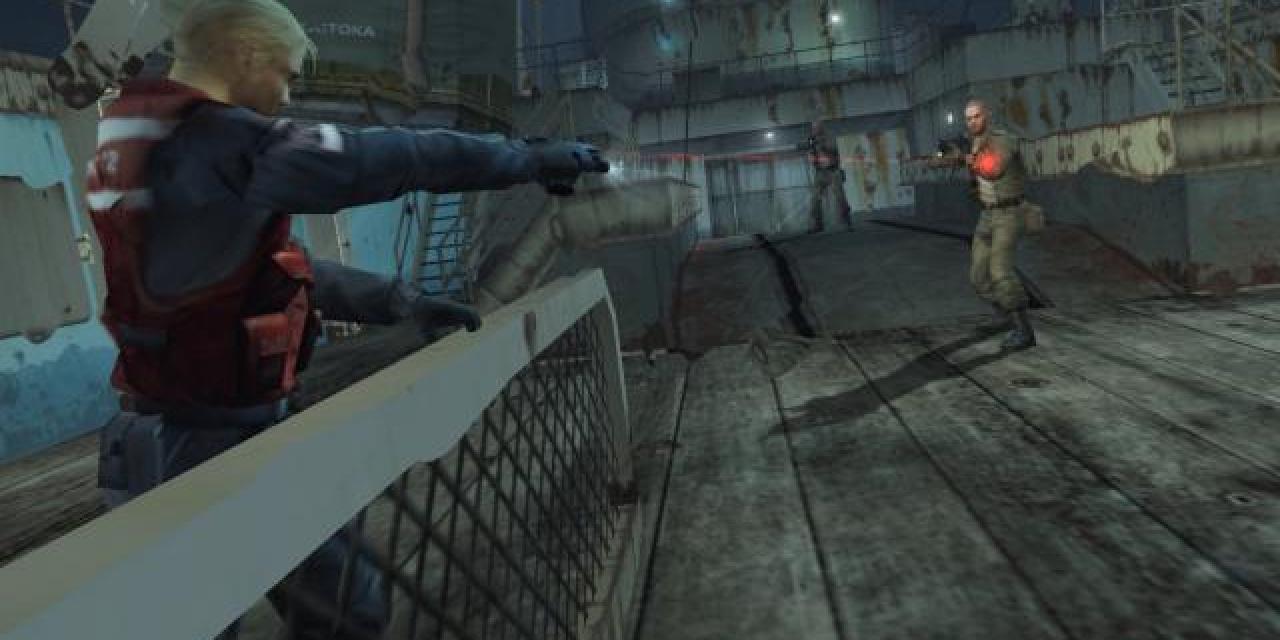
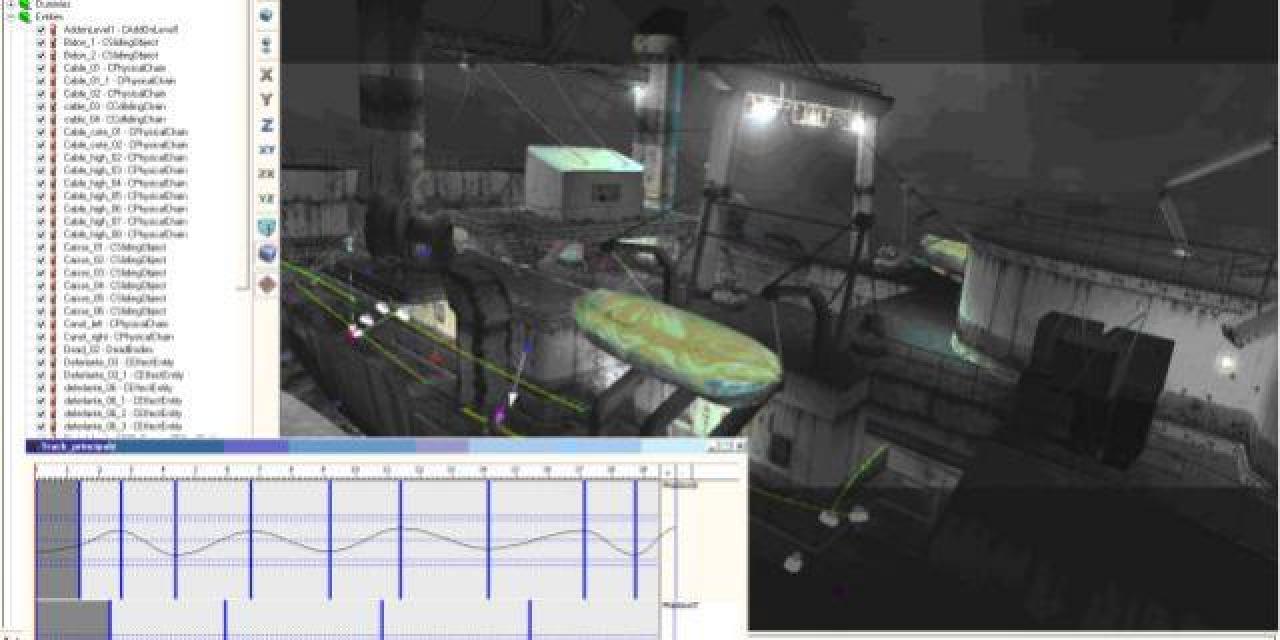
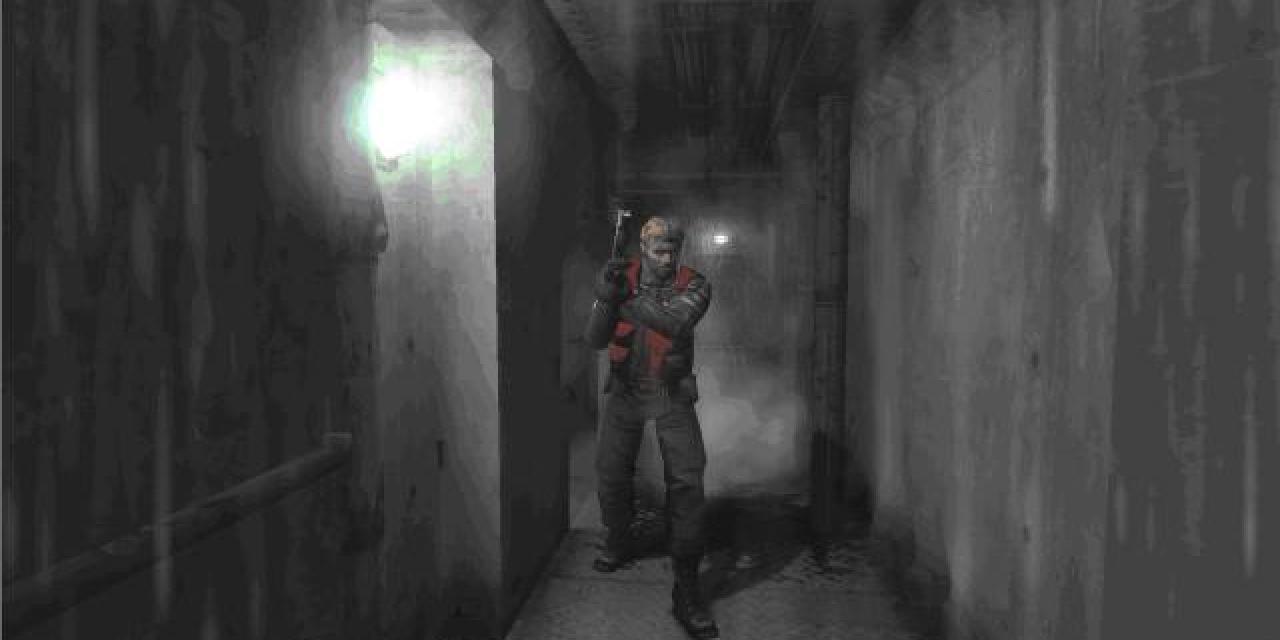
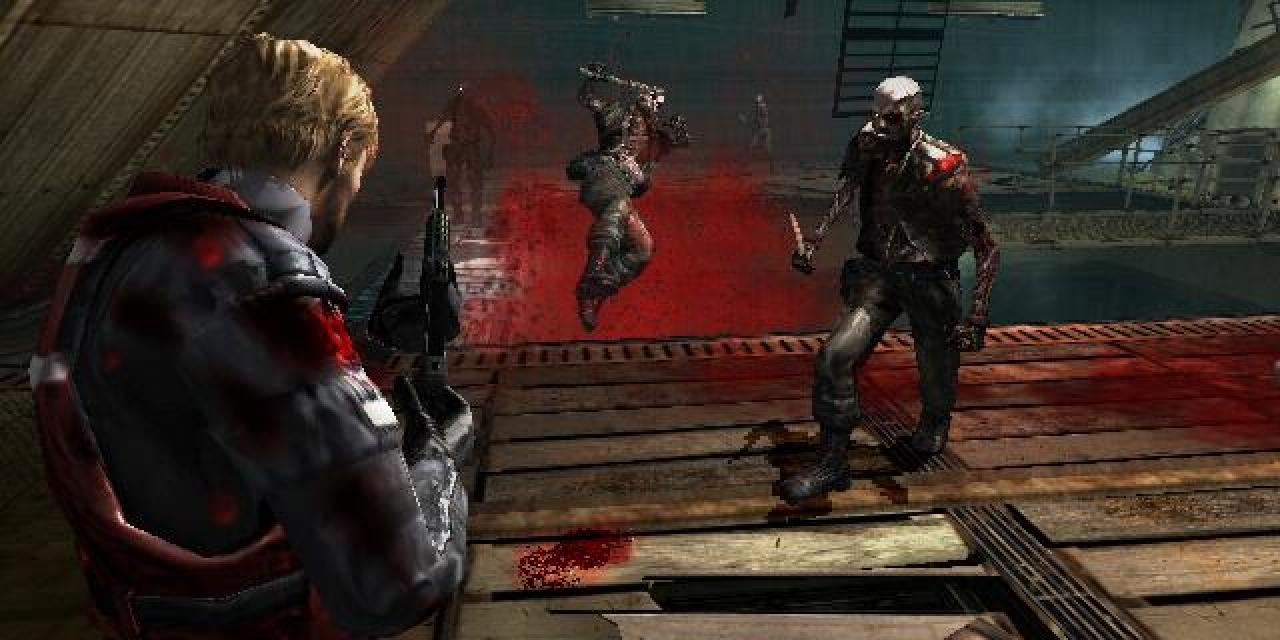
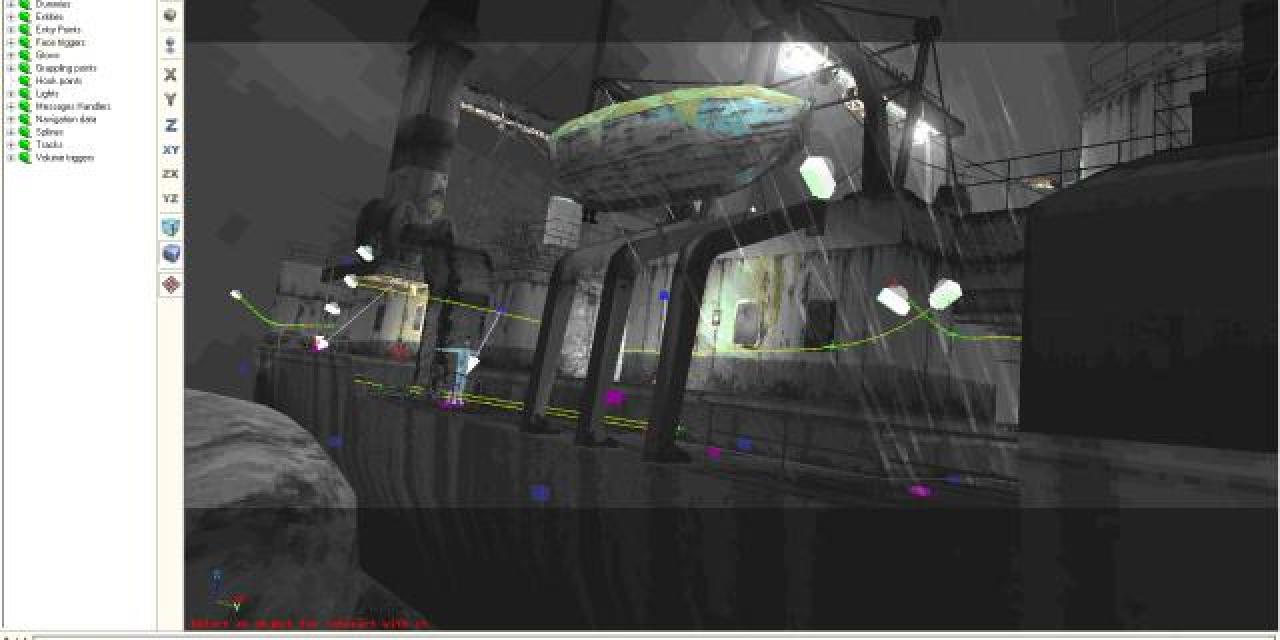
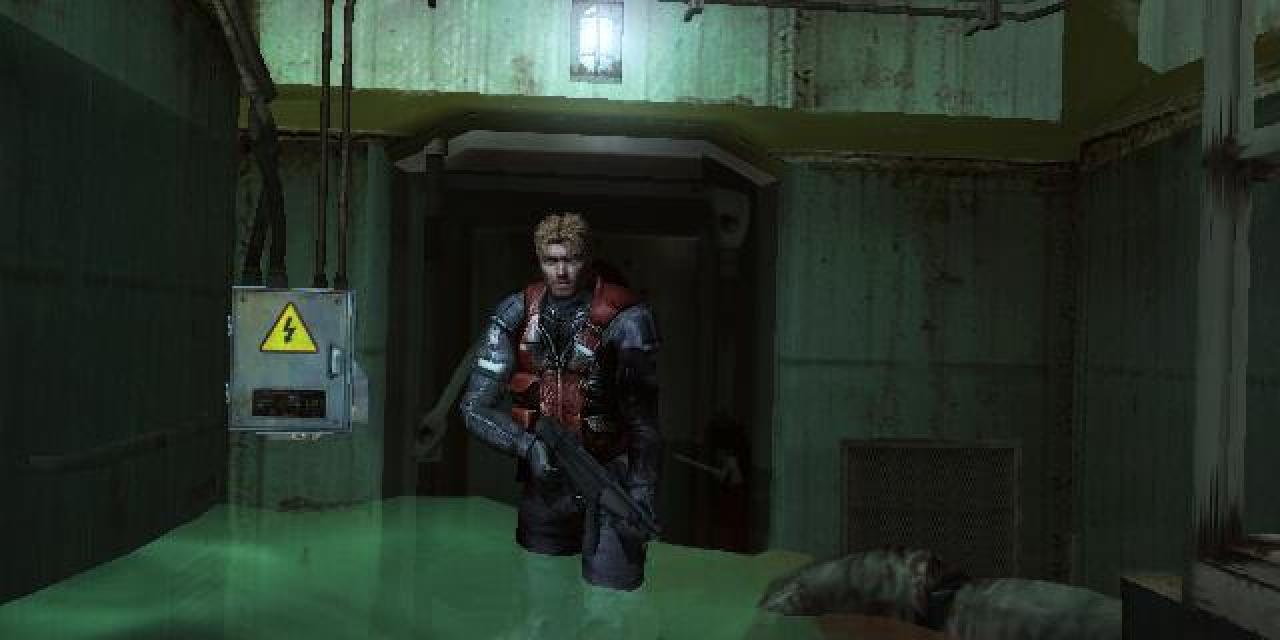
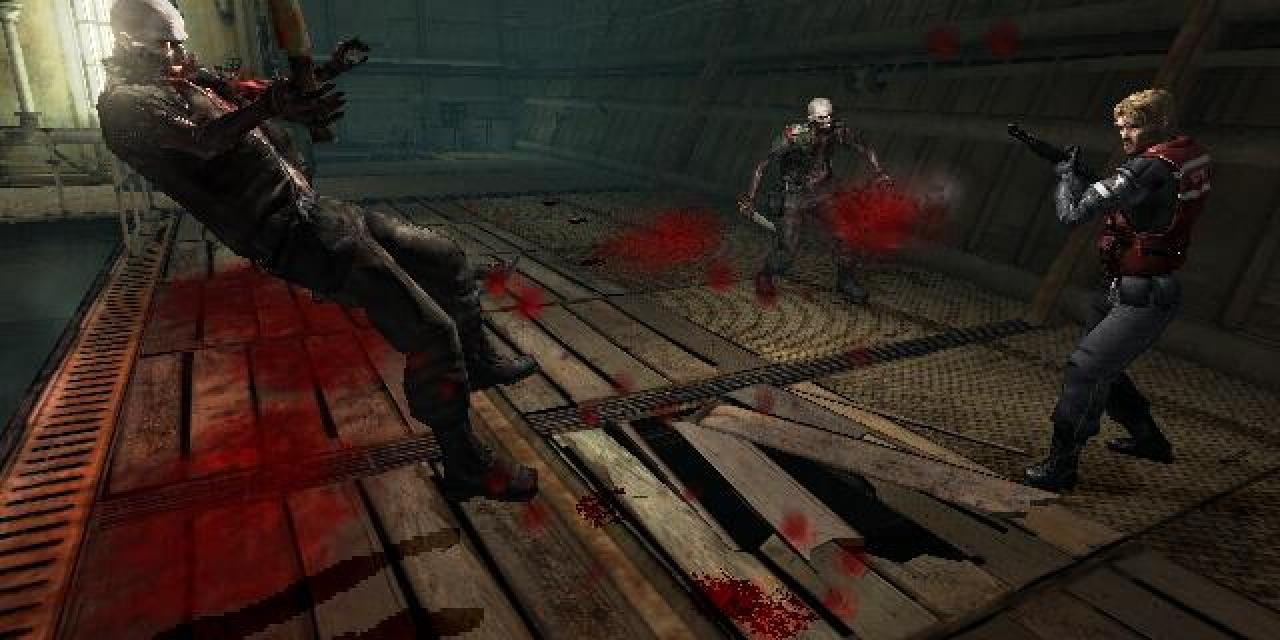
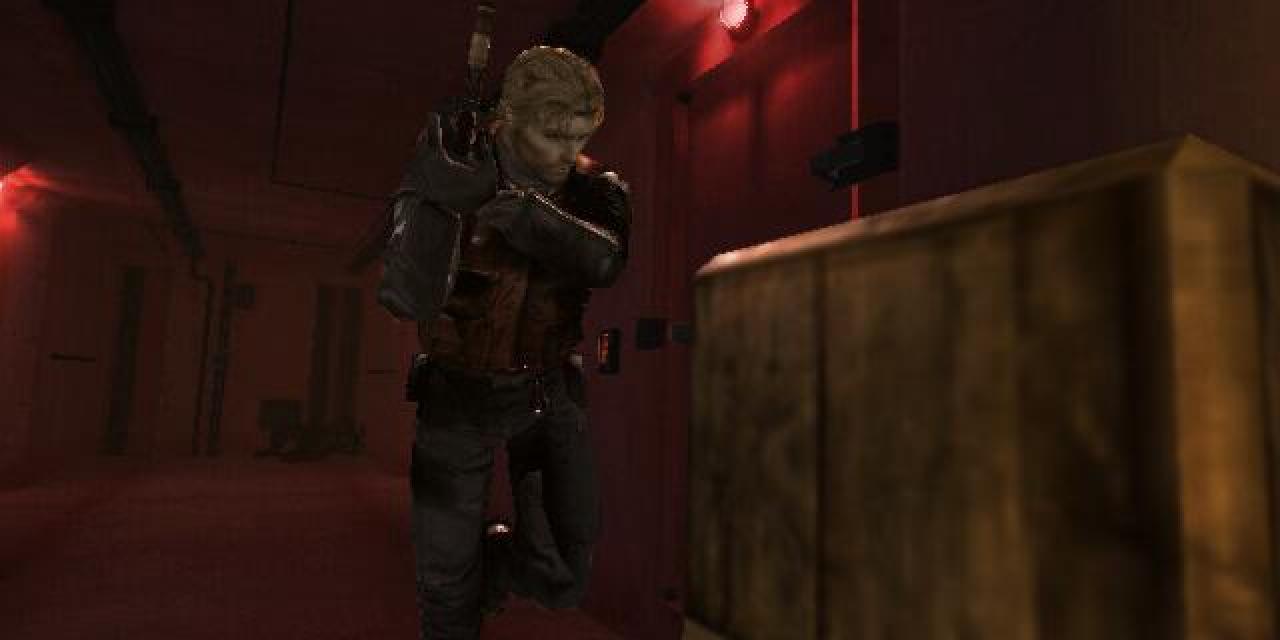
Ever wanted to know how a game is made? How every feature moves from a simple idea to pages of code and finally to a playable part of the game? A development diary for Ubisoft's upcoming horror shooter, Cold Fear may answer some of your questions.
The diary attempts to provide some information on how the development process leads to the creation of exciting new features in the game and of what the people behind the game actually think about it. The diary also includes brand new images of the game and of the development process, follow the screens tab above.
For those of you still not certain, Cold Fear puts you in the role of Tom Hansen a US Coast Guard crewman whose team is sent to investigate a drifting, abandoned Russian whaling ship. Prepare to face the horrors lurking beneath its bloodstained decks.
Players have to shoot their way through a bloodsoaked nightmare straight out of a horror movie and to confront hordes of alarmingly intelligent enemies as the ship's deck lurches constantly under their feet. The game will launch simultaneously for the PlayStation 2, the Xbox and PC-CD Rom. Cold Fear is slated for release in March 2005.
This is the first installment of the diary and it examines the work and thoughts of Darkwork's Lead Programmer for Cold Fear, Claude Levastre, Lead Artist, Arnaud Barros and Lead Animator, Antonin Delboy (Note for British readers: you can laugh out freely at that last surname). Read on to find out what a Lead Programmer on a big project, such as Cold Fear, does. Stay with Megagames for the Lead Designer and Lead Animator diary entries tomorrow and on Christmas Eve respectively.
Claude Levastre, Lead programmer, 37
I am lead programmer on Cold Fear. At the beginning of the project I worked on the boat's movements and their impact on the hero. Here at Darkworks we have a very good development team of 10 programmers, all experienced and dedicated.
How did you render the movements of the ship?
We had two objectives on this subject. We had to recreate a storm environment out at sea, but then we also had to give the player all the means to fight in this specific environment. Therefore, the challenge was to build a better control scheme than what is usually the norm in horror games.
Creating a storm environment
We were quickly able to make the ship move. But to achieve a more realist movement we had to develop a complete roll editor.
When out at sea, a ship moves both on a vertical axis (roll) and a horizontal one (pitch). Our Darkwave editor allows us to separately generate the pitch and roll following two different curves, and it is the combination of both that creates a realistic movement.
Monitoring the movement
Creating the ship's movement was not enough. From a gameplay point of view, it was important to control it step by step to better manage the rhythm of the action and the surprise effects in the game.
In the end the Darkwave system allows us to control everything that happens, just as if we were directing a movie like Titanic or The Perfect Storm. That means that each event falls in place at the right moment at the right place so that we are sure to offer the best show to the player as an actor.
New camera angles
Once the ship movement scheme was built, the second challenge was the camera system.
In terms of development, Cold Fear is a real challenge when it comes to camera system. It was a real headache because at the same time we had to efficiently render the movement of the scenery, and follow the hero who is also behaving to compensate this very movement.
For instance, in the early stages of development the camera was constantly going through the walls because of the roll movement. So we had to develop an inertia control system for the camera, just as if a cameraman is using a steadycam behind the hero.
The whaler offers very different and complex situations, including vast exteriors like on the main deck, and confined interiors like most corridors. Each of these configurations means a specific constraint in terms of camera.
For a horror game another innovation is that we have a directing-oriented camera system combined with autonomous cameras that follow the actions of the player. According to the action, our directors have 12 camera modes at their disposal to let the tension grow, highlight the atmosphere of a room or lead the player toward the next event or combat. And of course the player also has the opportunity to switch to the over the shoulder view at any moment.
Over the shoulder view
Most horror games put the emphasis on hand-to-hand or close-quarter combats. In Cold Fear, we wanted to create the possibility that the enemy shoot at you. We wanted to enrich the action gameplay and not have only creatures or mutants to shoot at.
We quickly developed an over the shoulder view to allow for shooting action and long range combat. We opted for an autolock-free targeting system so that the player would have a total control of his actions and not be frustrated by a strong assistance.
When compared to other horror games, this OTS camera really unleashes the action and makes it even more immersive. The player can strafe and move back while firing until the very last moment before being caught, which makes the combats more interesting and more tactical. It also makes contact with the creatures even more impressive and stressful.
With all the camera systems - combined with the OTS view - the player is never frustrated by the view of the game he has on his screen. It was something we really wanted to improve so that the player would really be able to fight the way he likes and immerge himself in the horrific atmosphere of the game.
Managing Tom interactions with the environment
In Cold Fear the characters spontaneously compensate the movements of the ship until the deck reaches a certain angle where they fall, and begin to slide. While sliding Tom can still turn back, stop himself falling by catching hold of the hull, and keep on shooting.
To achieve the best possible visual quality, the characters animations had to perfectly match the movements of the ship. The characters must compensate in all direction: forward, backward, on both sides and in all intermediary directions. Which gives us a total of 9 animations that have to be mixed together to create a movement that constantly follows the deck angle variations.
So we had to implement 9 times more animations than in the average third person game. Even if we managed to use some techniques like Inverse Kinematics, we still have 250 animations for Tom, and 150 for some enemies not including compensation animations. Our animators did a tremendous job to achieve such a result.
The game engine dynamically manages the impact of the moving environment on all entities: compensation, fall, slide… Everything is rendered in real time and even the corpses are still affected by roll movements.
Action!
Having good animations was a key issue in Cold Fear; but we also wanted the game to be able to show many enemies on the same screen. So we optimized the game again and again to reduce the size of the animations in the memory, with good results. In some scenes, we have a dozen of enemies including mercenaries, mutants, exocels… all interacting with each other and with the environment. This allows for really intense action sequences
What I like in Cold Fear
Cold Fear offers a never-seen-before visual experience in terms of animation richness. The interaction between the storm and the characters that are on the deck sometimes creates some really breathtaking moments. And on top of that, we managed to offer some really intense action sequences featuring far many more enemies than in most horror game.
The player has no time for relief in Cold Fear; it is this mix of strong atmosphere and intense action I am the most proud of.
Arnaud Barros, Lead Artist, 30
I am lead 3D artist on the project, and I mainly work on the 3D scenery and environmental FX production; I also manage the production of the characters. Cold Fear requested the work of around 20 artists for those aspects of the game alone, not including the teams working on animations and cinematics.
The sea is a living environment
From an artistic point of view, I concentrated my efforts on the environment animation in order to make it as realistic and fascinating as possible. So I studied everything that was at my disposal regarding sea storms: documentaries, photos… I was seeking to identify all the visual elements that would create the feeling of a boat moving on a raging sea.
Then we had to create all the animations and objects behaviors in order to make the general impression even more realistic. This includes the waves, foam and rain but also all the hanging objects like life boats, cables or corpses
A seamless environment
Right at the beginning most objects behaviors where scripted, but we gradually replaced them with physics. It was really satisfying to see some elements of the environment become real parts of the gameplay. The most relevant example is the breakers that can wound the player or carry away the enemy. We implemented the same behavior on big cables and other hanging elements. I really enjoy it when the huge crate on the main deck of the whaler crashes into the hero. Of course we used all those elements again when we created the oil rig.
The Perfect Storm
I am quite proud of the weather effects: rain, water sprinkles, the foam of the breakers… We improved our Dark FX tool to efficiently render those huge waves. Now when you get caught into a breaker, there is foam everywhere, thousands of particles fill the screen and you are really blinded. The most difficult part was to create a breaker that would look realistic whatever the camera angle. As we don't control the player's point of view we could not cheat with this effect.
There are other aspects of the game I really enjoy, like how the wind is handled for instance. It's something you have to take into account when using a flamethrower, because you could end up with a backdraft and loose some precious life points, if not worse...
Outside the Whaler
There are many things conveying immersion on the boat. From some places you can see the whole rear or front of the ship. Sometimes it can give a vertigo feeling, standing 35 meters high over the raging sea (the boat is also 100 meters long). You can also hear some cracklings and rattling when the roll is at its maximum. It really makes you feel that the boat is about to sink.
Inside the Whaler
Even if the interiors are purposely nearer, there are many elements to remind you the movements of the ship like the corpses and the enemies compensating, or the lights flickering when something hits the hull.
There's another moment I really like: there is a flooded room inside the whaler where we managed to render in 3D the swirls of the water in a really spectacular way. When you fire a bullet it creates swirls and sprays on the water. When you use an automatic rifle it makes the gunfights in water really fun. The water also reacts when a grenade explodes, generating huge sprays that fill the whole screen!
Setting up the scene
We choose to create a fully rusted ship to fit with the gore aspect and the blood. We also created some very specific areas to even further the gore ambiance, like with the propellers or whale sawing rooms.
What I like in Cold Fear
There are many aspects of Cold Fear I really like. But as an artist what I appreciate most is the good level of interaction there is between the visual environment and the gameplay. The waves can crush the player, if a character in flame enters the water it will extinguish the fire, and the electricity will propagate in the water. All these elements make Cold Fear very coherent and visually immersive.
Antonin Delboy Lead Animator, 25
I'm the lead 3D animator on Cold Fear. I sat up the roll system for the characters with Claude. With a team of 3 great animators, I also handled the production of all game characters animations.
As an animator, Cold Fear is great project to work on because the motion and animation are at the core of the concept, either through the environment or by the impact of the setting on the characters.
CF allowed me to experiment new techniques of animation and to innovate.
During the project, all the technical decisions were taken in favor of animation, both in terms of quality and quantity, which is very rare on this kind of project. The programmer team also developed very useful tools for us.
Cold Fear: an ambitious project
Cold Fear is very ambitious and technical. With the rolling, we had to set up a system that allows mixing 9 directions of each animation, depending on the angle of the boat.
The production of the animations
A basic animation was produced with 3D Max software. Thanks to the Inverse Kinematic we then created the animations in 9 directions: in the front, behind, on the sides and the intermediary directions. Then the engine calculated the level of compensation of the character depending on the angle of the boat.
Each motion of the character is made up of basic animations and compensation animations. Sometimes, more than 45 animations are mixed up together to produce a movement. With the animation team, we produced more than 900 animations for the characters in Cold Fear, which makes the game very rich. When including the compensation animations, we have more than 5,000 possible motions.
For the compensation animations, we programmed some Inverse Kinematic in the game to free some memory. We had to get rid of many animations that had already been produced, and replace them with dynamically generated animations. It was pretty tough for the animators. But each time an animation was automatically generated and had a malfunction, we decided to keep the animation that had been produced by the animators. That way we could preserve the quality of the animations as the project went on, and also free additional memory.
Variety of animations, personal behaviors
At an artistic level, what I like on the human characters, are small details such as the character reacting to the direction of the wind and protecting himself by putting his hand in front of his face. Dead bodies in motion are really great too and give an atmosphere to the game.
But to customize the animations, our main innovation was with the additives animations system. Additives animations allow customizing a character by adding a behavior on his movements. The behavior adds itself randomly on an existing animation to create a new, unique movement.
For instance: we can add an additional dodge movement, so when the player begins to shoot at the enemy, the enemy can use his dodge move regardless of his currents state (idle, running, aiming…). Another example is the electrocution behavior which makes the character shaking whatever the current animation. We also applied this system to the bullet impact system.
What is great with additives animations is that it can produce combinations, movements that we animators would have never anticipated. So, each player can potentially encounter some unique reactions from enemies in Cold Fear.
What I like in Cold Fear
What I like the most in Cold Fear is that animations are essential and never underrated. Everybody made great effort on this aspect so that the game features both great quality and terrific animations.
